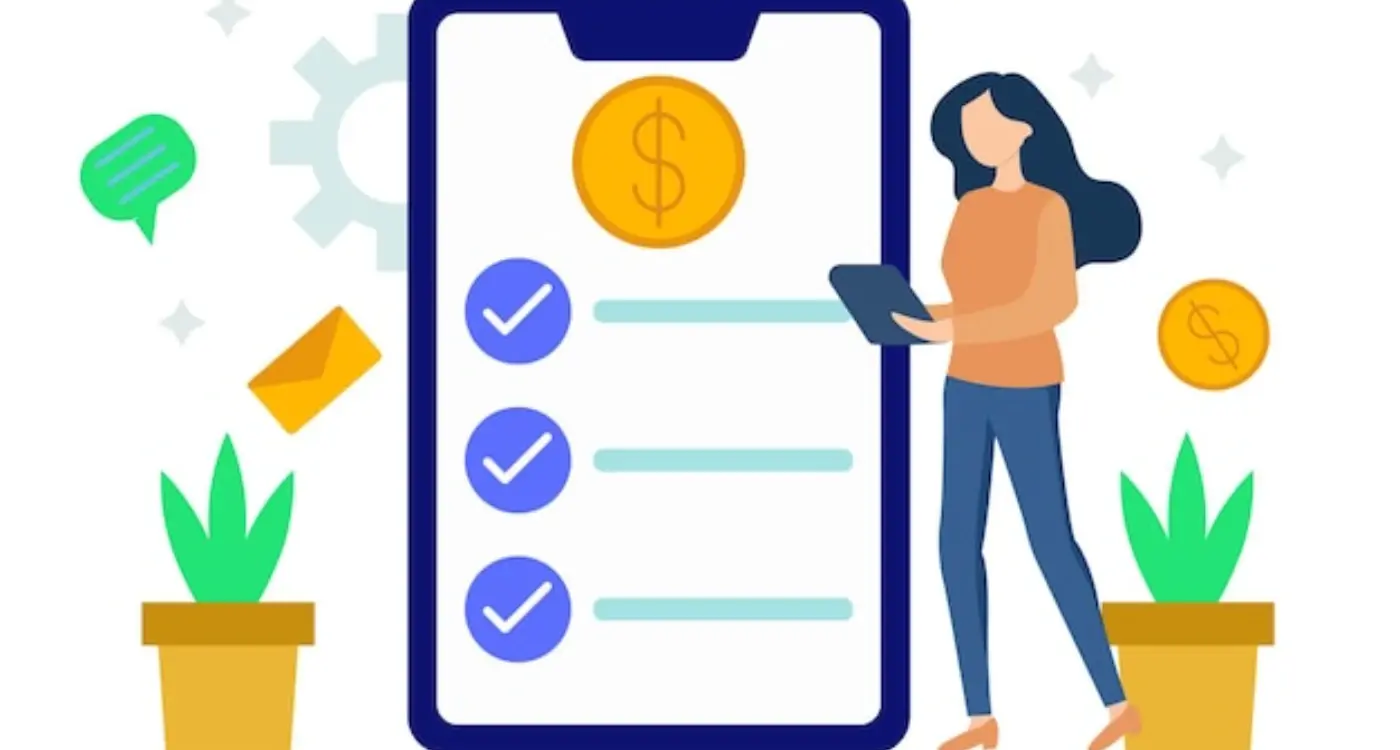Why Do Different Apps Cost Different Amounts?
A basic calculator app might cost £5,000 to build, while a social media platform could easily run into hundreds of thousands. That's quite a range, isn't it? After working with clients across every industry you can think of—from healthcare startups to major retail chains—I've noticed that one question comes up more than any other: "Why do app costs vary so much?"
The truth is, asking "how much does an app cost" is a bit like asking "how much does a house cost." Sure, they're both places where people spend time, but a studio flat in Manchester and a five-bedroom mansion in Surrey are going to have very different price tags. Apps work the same way; the complexity, features, and quality all play a part in determining the final cost.
When someone comes to me with an app idea, I've learned not to give ballpark figures until we've had a proper chat about what they actually need. I mean, I could build you a simple app that displays restaurant menus in a few weeks, or we could create something with real-time ordering, payment processing, loyalty programs, and AI-powered recommendations—that's going to take months and cost significantly more.
The biggest mistake people make is thinking all apps are basically the same. They're not. Each one has its own set of challenges and requirements that directly affect development time and cost.
Understanding variable app costs isn't just about budgeting (though that's important too). It's about making informed decisions about which features are worth investing in and which ones you can add later. Let's break down exactly what makes some apps cost peanuts while others require serious investment.
Right, let's get straight to the point here—app development costs aren't pulled out of thin air. There's actually a proper method to the madness, and after building apps for everything from corner shops to multinational corporations, I can tell you exactly what drives those numbers up or down.
Think of app development like building a house. You wouldn't expect a garden shed to cost the same as a five-bedroom mansion, would you? Same principle applies here. A simple calculator app that does basic maths is going to cost a fraction of what a banking app with biometric security, real-time transactions, and regulatory compliance will set you back.
The biggest cost driver I see? Complexity. Pure and simple. Every feature you add, every screen you design, every piece of data you need to store safely—it all adds up. And I mean really adds up. I've seen project estimates double just because someone decided they wanted push notifications and user accounts halfway through the planning stage.
But here's what most people don't realise: it's not just about the features themselves. It's about how those features need to work together, how secure they need to be, and how many people will be using them at once. An app that handles 100 users is fundamentally different from one that needs to serve 100,000 users without breaking a sweat.
Platform choice matters too—building for iPhone only versus iPhone and Android doubles your development time. Add web browsers into the mix? Well, that's a whole different conversation about budgets right there.
Simple Apps vs Complex Apps
Right, let's talk about the elephant in the room—why some apps cost a few thousand pounds whilst others run into hundreds of thousands. It's basically down to complexity, but that word gets thrown around so much it's lost its meaning hasn't it?
Simple apps are like digital business cards; they do one thing well and don't try to be clever about it. Think of a basic calculator, a simple note-taking app, or a straightforward weather display. These usually have static content, maybe a contact form, and don't need user accounts or fancy backend systems. You're looking at roughly 2-8 weeks development time.
Complex apps? Well, they're a different beast entirely. We're talking about apps that need user registration, real-time data syncing, payment processing, push notifications, and integration with multiple third-party services. Social media apps, banking applications, or e-commerce platforms—these can take months or even years to build properly.
What Actually Makes an App Complex?
- User authentication and profile management
- Real-time messaging or chat features
- Payment gateway integration
- GPS tracking and mapping
- Camera functionality with image processing
- Offline data synchronisation
- Admin dashboards and analytics
- Multi-language support
Here's the thing though—complexity isn't always obvious from the user's perspective. An app might look dead simple but have incredibly sophisticated algorithms running behind the scenes. Uber's interface is pretty straightforward, but the technology powering it? That's where the real complexity (and cost) lies.
Don't let feature creep turn your simple app into a complex one. Start with your core functionality and add features based on actual user feedback, not what you think users might want.
The key is being honest about what you actually need. Sure, it would be nice to have every possible feature, but each one adds development time and testing requirements. I always tell clients to think about their app's primary job first—everything else can come later.
Features That Drive Up Costs
Right, let's talk about the features that'll make your budget scream. I mean, literally—some features can triple your development costs overnight, and honestly, many clients don't see it coming until its too late.
User accounts and login systems? They seem simple enough, but they're actually quite complex under the hood. You've got password security, data encryption, forgotten password flows, email verification... the list goes on. And don't get me started on social media logins—each platform has its own quirks and requirements that need careful handling.
Real-Time Features Are Budget Killers
Chat systems, live notifications, real-time tracking—these features are bloody expensive to build properly. They require constant server connections, complex backend infrastructure, and loads of testing across different network conditions. A simple messaging feature can easily add weeks to your development timeline; a sophisticated chat system with file sharing and group messaging? You're looking at months.
Payment processing is another big one. Sure, services like Stripe make it easier than before, but you still need to handle security compliance, different payment methods, refunds, subscriptions, and failed transactions. Each payment scenario needs its own workflow, and the testing requirements are enormous.
Location and Camera Features
GPS tracking, maps integration, camera functionality—these native device features require specialised knowledge and extensive testing. Location services need to work accurately across different devices, handle poor signal areas, and manage battery usage properly. Camera features need to work consistently across dozens of different phone models with varying capabilities.
The thing is, users expect these features to work flawlessly. But building them properly takes time, expertise, and careful attention to edge cases that most people never consider.
Platform Choices and Their Price Impact
When I started building apps, the choice was simple—you built for one platform at a time. iOS or Android. That was it. These days? Well, things have gotten a bit more complicated, and your platform choices can seriously affect your budget.
Building for just iOS typically costs less upfront because you're targeting fewer devices. Apple controls their ecosystem tightly, which means fewer screen sizes, fewer operating system versions to worry about, and generally more predictable development. Android development, on the other hand, is like trying to hit a moving target—there are thousands of different devices out there, each with its own quirks and specifications.
Most clients ask me: "Can't we just build one app that works everywhere?" Sure, cross-platform development exists. Tools like React Native and Flutter let you write code once and deploy to both platforms. Sounds perfect, right? Well, it's not quite that simple. Cross-platform apps can save you money initially, but they often require platform-specific tweaks that add time and cost. Plus, you might miss out on some native features that could make your app truly shine.
The cheapest platform choice isn't always the smartest one—sometimes paying more upfront for native development saves you headaches and money down the road
Here's what I tell my clients: if you're testing an idea or have a tight budget, start with one platform. Pick the one where your users are most active. You can always expand later. But if you need specific platform features—like Apple's Face ID or Android's widget system—you'll want native development despite the higher costs. The key is matching your platform choice to your actual business needs, not just your budget constraints.
Design Requirements and Budget Effects
Right, let's talk about design—because this is where things can get properly expensive if you're not careful. I mean, everyone wants their app to look beautiful, but the difference between "nice looking" and "custom everything" can literally double your budget.
Here's the thing about app design: you've got standard UI components that come built into iOS and Android, and then you've got custom designs that need to be created from scratch. Using standard components? That's your budget-friendly option. Want everything to look unique and branded? Well, that's where the costs start climbing.
Standard vs Custom Design Elements
I'll break this down because its actually quite straightforward. Standard design uses the buttons, menus, and layouts that Apple and Google provide. They work well, users know how to use them, and developers can implement them quickly. Custom design means your designer creates everything from scratch—every button, every screen transition, every little animation.
- Standard UI components: Quick to implement, users already know how they work
- Custom icons and graphics: Require design time and developer implementation
- Complex animations: Need specialist skills and lots of testing
- Brand-specific colour schemes: Usually straightforward to implement
- Custom fonts: Can add licensing costs and technical complexity
The real budget killer? When clients want everything to be "different" without understanding why. Sure, you can have a completely custom interface, but each custom element needs to be designed, coded, and tested across different screen sizes. That adds up fast.
When Custom Design Makes Sense
Don't get me wrong—sometimes custom design is absolutely worth the investment. If you're building a gaming app, a creative tool, or something that needs to stand out in a crowded market, then yes, invest in that custom design. But if you're building a business productivity app? Standard components will probably serve you just fine and keep your costs reasonable.
Backend Systems and Data Storage
Right, let's talk about something that most people don't see but absolutely drives up variable app costs—the backend systems. This is where your app's brain lives, and honestly, it can make or break your budget faster than you'd think.
When I'm explaining backend costs to clients, I always start with the basics. Simple apps that just display information? They might not need much backend at all. But apps that handle user accounts, process payments, or sync data across devices—that's where things get expensive quickly.
The complexity really shows in your data storage needs. A basic photo sharing app needs somewhere to store images, but a social media app needs databases for users, posts, comments, likes, friend connections... you get the picture. Each layer adds cost.
Server and Database Requirements
Here's what really affects your diverse app expenses on the backend side:
- User authentication systems and security protocols
- Real-time features like chat or live updates
- File storage for images, videos, or documents
- Payment processing integration
- Push notification services
- API integrations with third-party services
And here's the thing—these costs don't just appear once during development. You've got ongoing hosting fees, database maintenance, security updates, and scaling costs as your user base grows. I've seen clients shocked when their monthly server bill jumps from £100 to £1,000 because their app suddenly got popular.
Always budget for at least 6 months of backend running costs from day one. Your app complexity pricing should include these ongoing expenses, not just the initial build.
The backend decisions you make early on will follow you for years. Choose wisely, because switching later? That's a whole different expense altogether.
Development Team Size and Experience
The people building your app have a massive impact on both cost and quality. I've seen projects where hiring the wrong team doubled the budget and still delivered a subpar product. But here's the thing—more expensive doesn't always mean better, and cheaper rarely means good value.
A single developer might charge £40-60 per hour and seem like a bargain. But they're juggling frontend, backend, design, and testing all by themselves. That's like asking one person to be a chef, waiter, and dishwasher at a busy restaurant. Sure, it's possible, but something's going to suffer.
A proper development team typically includes a project manager, UI/UX designer, frontend developer, backend developer, and QA tester. That's five people instead of one, but the work gets done faster and to a higher standard. The hourly rates might jump to £60-120 per hour for the team, but the total project time often drops significantly.
Experience Levels and Their Impact
Junior developers (1-3 years experience) cost less upfront but take longer to solve problems. I've seen junior teams spend weeks on issues that senior developers fix in hours. Senior developers (5+ years) charge more per hour but their efficiency often makes them cheaper overall.
Location matters too. A team in London will cost more than one in Manchester, which costs more than offshore developers. But communication, time zones, and quality control become factors with distant teams.
- Solo developer: £40-60/hour, longer timeline, higher risk
- Small team (2-3 people): £50-80/hour, balanced approach
- Full team (4-6 people): £60-120/hour, faster delivery, higher quality
- Agency with proven track record: £80-150/hour, comprehensive service
The sweet spot? A small, experienced team that's worked together before. They know each other's strengths, communicate well, and can move quickly without stepping on each other's toes.
Testing and Launch Considerations
Right, so you've built your app—but you're not done spending money yet! Testing and launching an app properly can add anywhere from £3,000 to £15,000 to your project costs, and honestly, skipping this step is like buying a car without checking if the brakes work.
The testing phase varies massively depending on your app's complexity. A simple utility app might just need basic functionality testing across a few devices—maybe £1,000-2,000. But if you've got payment systems, user accounts, or complex features? You're looking at comprehensive mobile app testing that includes security audits, performance testing under load, and compatibility checks across dozens of device combinations.
Device Testing Reality Check
Here's something that catches people off guard: there are thousands of Android devices out there, all with different screen sizes, processors, and operating system versions. Testing on real devices (not just simulators) costs money—either you buy the devices or pay for cloud testing services. iPhone testing is simpler but still requires checking multiple models and iOS versions.
The most expensive bug is the one your users find after launch, especially if it crashes the app during payment processing
Launch Costs People Forget
App store fees are just the beginning. Developer accounts cost around £80-100 annually per platform. Then there's app store optimisation, creating marketing materials, and setting up analytics. If you want professional app store screenshots and descriptions, that's another £500-2,000.
Beta testing with real users? Budget for user recruitment and feedback management tools. And don't forget about compliance—if your app handles health data or payments, legal reviews can cost thousands but they're absolutely necessary. The variable app costs here depend entirely on how thorough you want to be, but cutting corners usually costs more in the long run.
You know what? After eight years of building apps for everyone from scrappy startups to massive corporations, I reckon the biggest thing people get wrong about app costs is thinking there's some magic formula. There isn't. Every app is different, every client has different needs, and honestly—that's what makes this industry so interesting.
The truth is, app development costs come down to choices. Do you want a simple app that does one thing well, or something complex that handles multiple user types and integrates with dozens of systems? Are you building for one platform or both? Do you need custom animations and interactions, or will standard components work? Each decision shifts the price tag.
But here's the thing I always tell clients: the cheapest option isn't always the smartest one. I've seen too many businesses try to cut corners early on, only to spend twice as much later when they need to rebuild everything properly. Its better to be realistic about your budget from the start and build something solid that can grow with your business.
The app market has matured massively over the years. Users expect more, competition is fiercer, and the technical requirements keep getting more complex. But that doesn't mean good apps are impossible to build on reasonable budgets—it just means you need to be smart about prioritising features and understanding what really matters to your users.
My advice? Start with your core problem and work outwards. Build the minimum viable product that solves that problem well, then iterate based on real user feedback. That approach will always give you better value than trying to build everything at once.
Share this
Subscribe To Our Learning Centre
You May Also Like
These Related Guides

Should I Offer Different Pricing For Different Countries?

Do I Need Different Privacy Policies For Different Countries?



